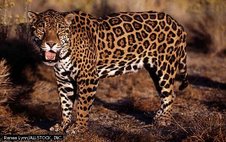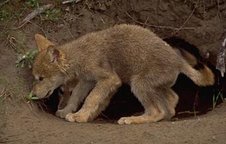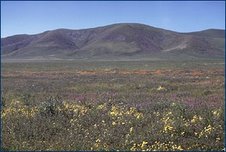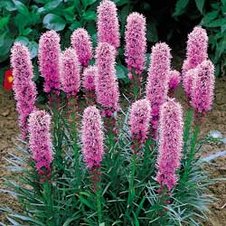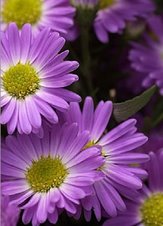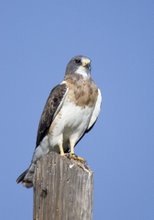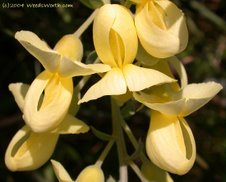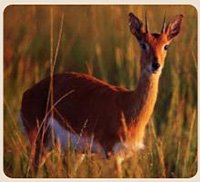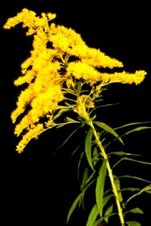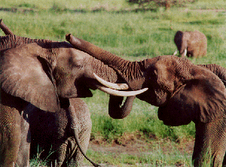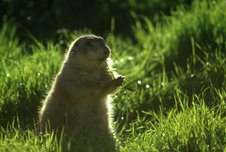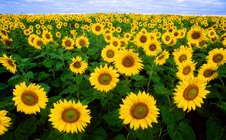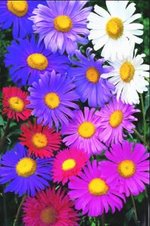A beautiful picture of the wonderous grasslands!

The zones of the Temperate grasslands
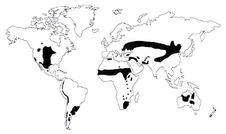
Temperate grasslands are found mainly outside of the tropics, in temperate regions. In moist areas, short, thick, green plots of grass cover treeless, and seemingly endless, hills and plains. Before farming and livestock took over, grasslands covered certain areas of every continent, excluding Antarctica.
Animals
Temperate grasslands are home to many large herbivores. Some of these include bison, gazelles, zebras, rhinoceroses, and wild horses. Carnivores like lions and wolves are also found in temperate grasslands. Other animals of this region include: deer, prairie dogs, mice, jack rabbits, skunks, coyotes, snakes, foxes, owls, badgers, blackbirds, grasshoppers, meadowlarks, sparrows, quails, and hawks.
Animals Adaptations
Most temperate grasslands are inhabited by hares, mice, and other small rodents. These animals have sharp teeth that can easily gnaw through grass.
In Australia, kangaroos and wallabies roam freely. Kangaroos have sharp incisors that are used to cut off tips of tough grass. Kangaroos are also marsupials, which means that the females carry their young in skin pouches until they are able to function on their own. They escape from their predators by gaining speed using quick, long bounds. So the Kangaroos adaptation was the speed they developed to escape their enemies, and sharp incisors to cut off tips off tough grass.
Smaller rodents defend themselves from predators by living underground or by having camouflaged fur.
Most of the large grazing animals stay in large, intimidating packs, like bison, or escape their predators by running and leaping, like kangaroos.
In the winter, rodents store food in their underground tunnels and keep out of the cold or hibernate. Bigger animals survive the winter by growing a thicker coat and foraging for food.
Plants
The soil of the temperate grasslands is deep and dark, with fertile upper layers. It is nutrient-rich from the growth and decay of deep, many-branched grass roots. The rotted roots hold the soil together and provide a food source for living plants. Each different species of grass grows best in a particular grassland environment (determined by temperature, rainfall, and soil conditions). The seasonal drought, occasional fires, and grazing by large mammals all prevent woody shrubs and trees from invading and becoming established. However, a few trees, such as cottonwoods, oaks, and willows grow in river valleys, and some nonwoody plants, specifically a few hundred species of flowers, grow among the grasses. The various species of grasses include purple needlegrass, blue grama, buffalo grass, and galleta. Flowers include asters, blazing stars, coneflowers, goldenrods, sunflowers, clovers, psoraleas, and wild indigos.
http://www.ucmp.berkeley.edu/exhibits/biomes/grasslands.php
Plants adaptations
A grassland is a region where the average annual precipitation is great enough to support grasses, and in some areas a few trees. The precipitation is so eratic that drought and fire prevent large forests from growing. Grasses can survive fires because they grow from the bottom instead of the top. Their stems can grow again after being burned off. The soil of most grasslands is also too thin and dry for trees to survive.
Plants have long roots to dig into the fertile soil. And the ability to store water in their roots for long times, becuase droughts are common.
Some main adaptations are thick bark on trees to resist fire, a long root system so grazing animals can't pull the plant out of the ground, and soft stems for bending in the wind.
Temperature
Moderate climates halfway between the equator and the poles.
Average temperatures range from -5 C to 20 C. The temperature range is very large over the course of the year. Summer temperatures can be well over 38° C (100 degrees Fahrenheit), while winter temperatures can be as low as -40° C (-40 degrees Fahrenheit).The temperature range is very large over the course of the year. Summer temperatures can be well over 38° C (100 degrees Fahrenheit), while winter temperatures can be as low as -40° C (-40 degrees Fahrenheit).
Precipitation
Precipitation in the temperate grasslands usually occurs in the late spring and early summer. The annual average is about 50.8 to 88.9 cm (20-35 inches). Rainfall is moderate. The amount of annual rainfall influences the height of grassland vegetation, with taller grasses in wetter regions.
Light
The light is usually around for 14 to 18 hours each day
Also the light easily gets to small bushes and shrubs because there are'nt many trees to block the sunlight.
Soil properties
The soil of the temperate grasslands is deep and dark, with fertile upper layers. It is nutrient-rich from the growth and decay of deep, many-branched grass roots. The rotted roots hold the soil together and provide a food source for living plants. Each different species of grass grows best in a particular grassland environment (determined by temperature, rainfall, and soil conditions).
Human effects to the Temperate Grasslands
The loss of large areas of tropical grasslands and forests has become a major concern of the world community today. Over the past century, a big percentage of grasslands and woodlands in Uganda has been affected by human activities such as livestock grazing, farming, logging and swamp reclamation. Across much of Northeastern Uganda, extensive and semi-extensive livestock systems rely on the use of these grasslands (rangelands) for the essential input of forage into livestock production.
In terms of general support functions, the services and products we derive from tropical grasslands are diverse and they benefit people at the local, national and global levels. Indigenous people and communities that live on the fringes of these grasslands rely on them to graze their animals that in turn provide them with food. They also rely on them for shelter. The well being of these communities therefore extensively depends on these grasslands.
http://www.ossrea.net/ssrr/no24/no24.htm
What humans can do to reverse the effects.
Since humans need the grasslands for many things, we need to start respecting it. The main causes of the damage to the grasslands is overstocking on grassland availability, agricultural production and overgrazing. The solution to this problem is to just stop, or cut down a bit. We think we need to do most of the things we do becuase we are so used to it, but we really could go on about living without it.
Mutualism
One example is flowering plants and bees, the flowers get pollinated by bees and the bees get food from the flowers.
Commenalism
Nurseplants is a good example of commensalism. Larger nurse plants provide protection for seedlings growing nearby. Prtotection from herbivores, also protection from heat-stress and transpiration, and protection from frost damage.
Parasitism
Rhinanthus minor lives on the roots of grasses, reducing their competetive dominance and therefore enabling other plant species such as the flowering herbs to flourish.
Grassland food web
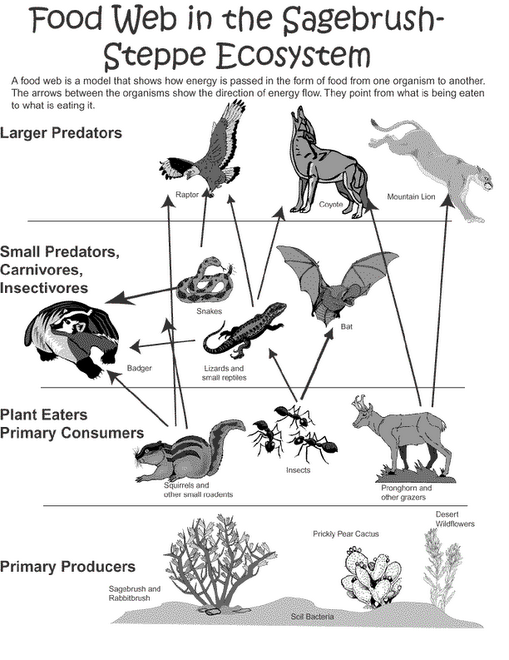
Starting from the bottom: Primary producer, Primary consumer, secondary consumer, and tietiary consumer
Sunday, June 10, 2007
Welcome
I hope everyone enjoys my biome and has a good time going through my site, and please visit my other sites.
Subscribe to:
Comments (Atom)
